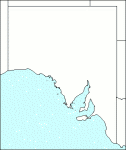Family: Iridaceae
Homeria miniata
Citation:
Sweet, Brit. Flower-gdn 2:t. 152 (1826).
Synonymy: Moraea miniata Andrews, Bot. Rep. 6:t. 404 (1804).
Common name: Two-leaved Cape tulip.
Description:
Perennial 30-60 cm high, producing numerous bulbils c. 2 mm long in the leaf axils after flowering; corm to 2.5 cm diam.; leaves 2 or 3, near-basal, 20-100 cm long, 5-15 mm wide, lax, trailing; stem loosely branched, with bracts 3-5 cm long.
Spathes 4-6 cm long, the outer bract about two-thirds the inner, with brown acuminate apices; flowers pink, each segment with a triangular yellow mark dotted with green at the base, sweet-scented; perianth-segments elliptic, 1.3-2.3 cm long, forming a very small cup around the filament tube, spreading above; filaments connate in a tube 6-8 mm long, swollen and pubescent at the base; anthers c. 2 mm long, coherent; ovary 5-10 mm long; style branches 3, 2-fid, spreading, 1-2 mm long; stigmas minute, projecting between the dehisced anthers; style crests absent.
Capsules c. 1.5 cm long, obtuse, beakless.
Published illustration:
Parsons (1973) Noxious weeds of Victoria, p. 174.
|
|
Distribution:
|
On pastures, roadsides and disturbed ground, never under dense tree or shrub cover.
W.Aust.; N.S.W.; Vic. Native to South Africa.
|
Conservation status:
naturalised
Flowering time: Aug. — Oct.
|

SA Distribution Map based
on current data relating to
specimens held in the
State Herbarium of South Australia
|
Biology:
A serious weed of pastures, being difficult to control and toxic to stock.
Author:
Not yet available
|

